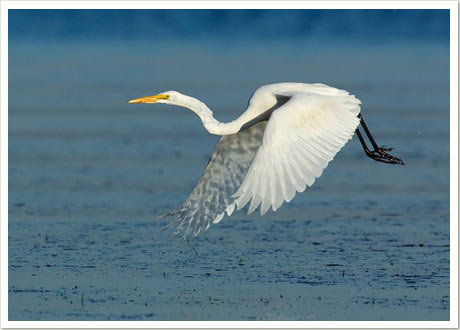|
| Great Egret |
PHOTO: 1 2 |
 |
|
 |
 |
| Great Egrets arrive on the first southerly winds of April, and can be seen throughout the summer and early fall. Egrets nest in a small number of large, local colonies from May until July, and then disperse to preferred feeding areas after nesting is over. For example, a Great Egret at Plymouth Beach in June has probably traveled from its colony in Hingham Harbor. One seen in August or September could be from Long Island, New Jersey, Maine or Connecticut. Egrets mostly eat fish in shallow bays and estuaries, catching food by stalking slowly and then striking with lightning quickness and a long, sharp beak. |
|
|